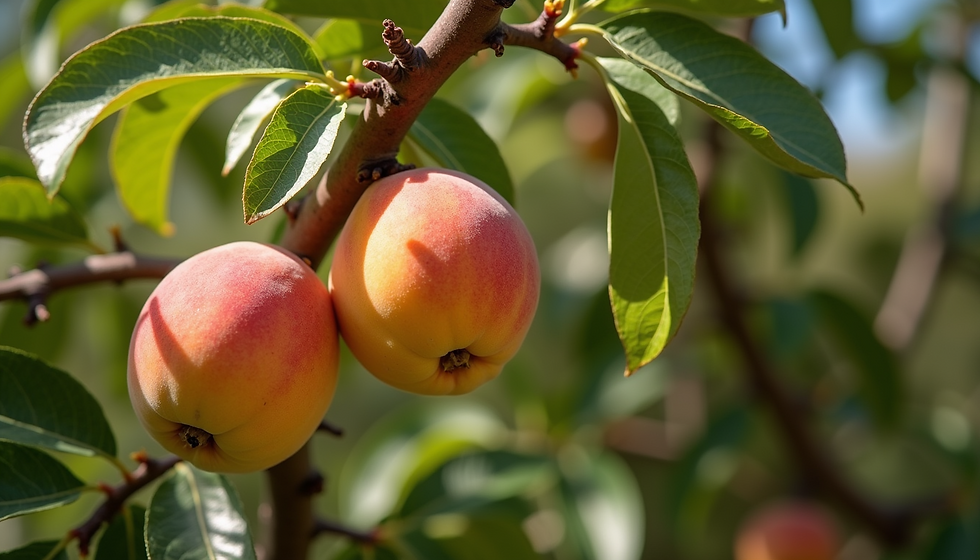Growing Orange Trees in Perth A Complete Guide for Local Gardeners
- stuart taylor

- 1 day ago
- 3 min read
Growing orange trees in Perth offers a rewarding way to enjoy fresh, juicy fruit right from your backyard. The city’s Mediterranean climate suits citrus trees well, but success depends on understanding local conditions and proper care. This guide walks you through everything you need to know to grow healthy orange trees in Perth, from choosing the right variety to harvesting your first fruit.

Choosing the Right Orange Tree Variety for Perth
Not all orange trees thrive equally in Perth’s climate. The city experiences hot, dry summers and mild, wet winters, which suits some varieties better than others.
Washington Navel: This variety is popular for its sweet, seedless fruit and good tolerance to Perth’s dry summers.
Valencia: Known for juicy oranges ideal for juicing, Valencia trees handle heat well but need more water.
Blood Orange: Adds a splash of color and unique flavor, but requires slightly cooler conditions, so plant in a shaded spot.
Selecting a variety suited to your garden’s microclimate will improve your chances of success. For example, if your garden is exposed to full sun and wind, Washington Navel is a solid choice.
Preparing Your Garden for Planting
Orange trees need well-draining soil and plenty of sunlight. Perth’s sandy soils can be challenging but manageable with some preparation.
Soil Improvement: Mix organic compost or well-rotted manure into the soil to improve fertility and moisture retention.
pH Level: Aim for a soil pH between 6.0 and 7.5. You can test soil pH with a kit from a garden centre.
Sunlight: Choose a spot that receives at least 6 hours of direct sunlight daily.
Space: Allow 3 to 4 meters between trees to ensure good air circulation and room to grow.
Before planting, dig a hole twice as wide and deep as the root ball. This gives roots space to spread and establish quickly.
Planting and Early Care
Plant your orange tree during the cooler months, ideally in early spring or autumn, to avoid the harsh summer heat.
Remove the tree gently from its container and loosen the roots if they are tightly bound.
Place the tree in the hole so the top of the root ball is level with the soil surface.
Backfill with soil and water deeply to settle the roots.
Mulching around the base helps retain moisture and suppress weeds. Use organic mulch like wood chips or straw, keeping it a few centimeters away from the trunk to prevent rot.
Watering and Fertilising Tips
Consistent watering is crucial, especially in Perth’s dry summers. Orange trees need deep watering to encourage strong root growth.
Water young trees twice a week during dry periods.
Mature trees require watering every 7 to 10 days.
Avoid overwatering, which can cause root rot.
Fertilising supports healthy growth and fruit production.
Use a citrus-specific fertiliser high in nitrogen, potassium, and magnesium.
Apply fertiliser three times a year: early spring, mid-summer, and early autumn.
Follow package instructions carefully to avoid overfeeding.
Managing Pests and Diseases
Orange trees can attract pests like aphids, scale insects, and citrus leaf miners. Regular inspection helps catch problems early.
Aphids: Spray with insecticidal soap or introduce ladybugs.
Scale insects: Remove with a soft brush or use horticultural oil.
Citrus leaf miner: Prune affected leaves and maintain tree health.
Fungal diseases such as citrus canker or root rot can occur if conditions are too wet or humid. Ensure good drainage and avoid overhead watering.

Harvesting and Using Your Oranges
Oranges typically take 6 to 12 months to mature after flowering. Signs of ripeness include:
Bright orange color with no green patches.
Slightly soft to the touch.
Sweet aroma near the fruit.
Pick oranges by twisting gently or using pruning shears to avoid damaging the tree. Store harvested fruit in a cool, dry place or refrigerate to extend freshness.
Enjoy your homegrown oranges fresh, juiced, or in recipes like marmalade and salads. Growing your own fruit reduces waste and gives you control over pesticides and chemicals.
Seasonal Care and Maintenance
Perth’s climate means your orange tree needs different care throughout the year.
Summer: Increase watering frequency and check for pests regularly.
Autumn: Reduce watering as temperatures cool and prepare for harvest.
Winter: Protect young trees from frost with covers or move potted trees indoors.
Spring: Prune lightly to shape the tree and remove dead branches.
Regular pruning improves airflow and sunlight penetration, which helps fruit quality and reduces disease risk.




Comments